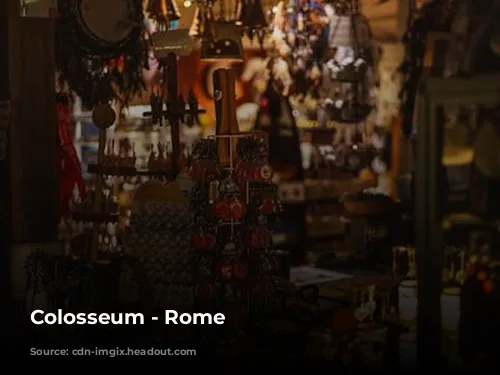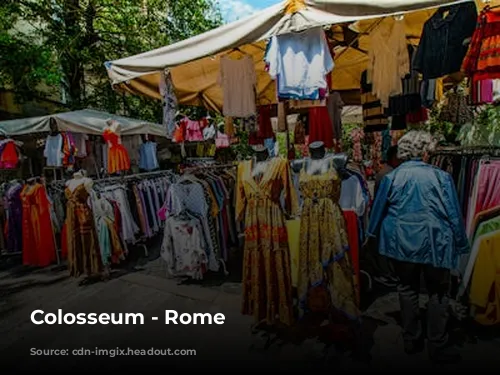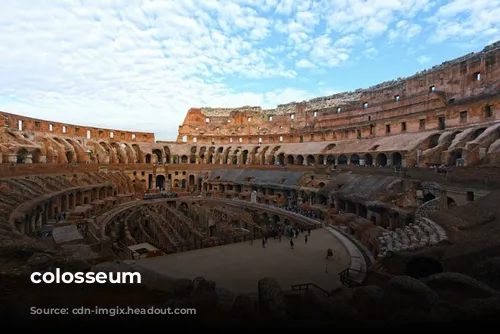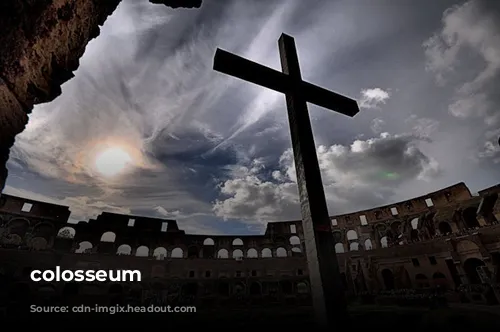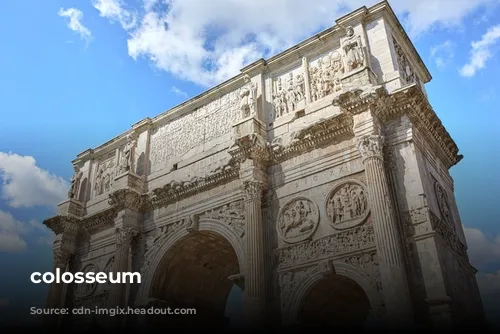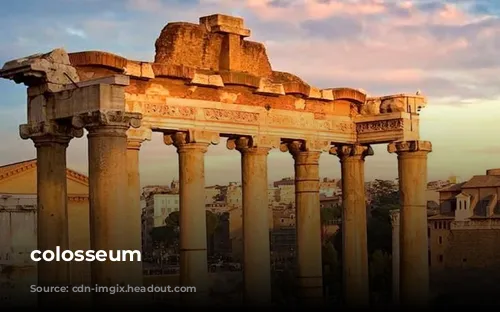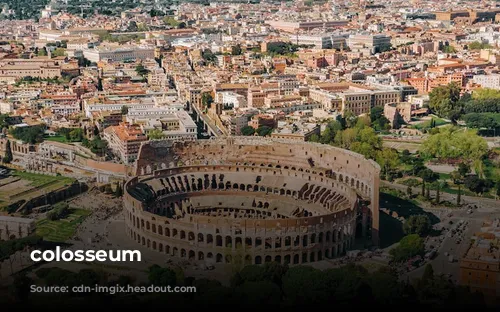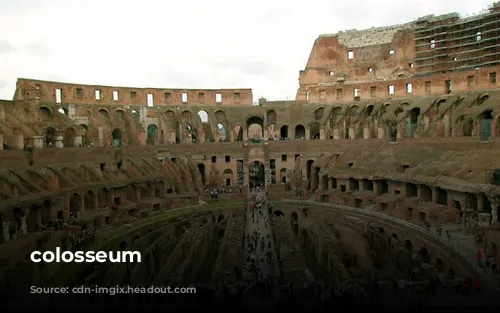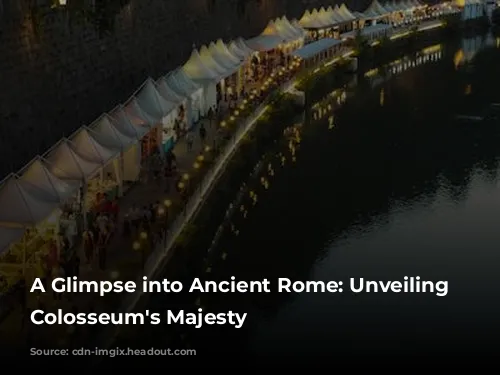The Colosseum, a towering symbol of the Roman Empire, stands as a testament to the grandeur and ingenuity of ancient Rome. This colossal elliptical structure, measuring an impressive 620 feet long and 513 feet wide, was built on the site of a drained artificial lake. Its construction marked the end of a tyrannical rule, serving as a grand gesture to the Roman people.
The Colosseum’s vastness is awe-inspiring. It could accommodate a staggering 60,000 seated spectators and 10,000 standing guests, often hosting around 70,000 people at a time. To truly appreciate the scale and magnificence of this architectural marvel, check out the video below where our expert, Sara, takes you on a virtual journey.
A World-Renowned Landmark: Unveiling the Colosseum’s Records
The Colosseum is a magnet for tourists, drawing in over 4 million visitors annually. This engineering masterpiece boasts numerous records. Unlike most amphitheaters of its time, which were circular, the Colosseum’s elliptical shape provided spectators with an unparalleled view of the action. It could hold an astonishing 80,000 spectators and was constructed without the benefit of modern machinery.
The grand structure boasts 80 ornate entrances, as well as numerous doorways, tunnels, staircases, and corridors. Imagine yourself walking the same path as the gladiators, experiencing the thrill and grandeur of this ancient site firsthand. Consider embarking on a guided tour to explore the rich history and intricate details of this iconic monument.

A Gift to the Roman People: The Colosseum’s Origins and Transformation
Did you know that Rome’s Colosseum was a gift from Emperor Vespasian of the Flavian dynasty to the Roman people? Construction commenced around AD 70-72 and took over a century to complete. Vespasian’s son, Titus, officially opened the arena in AD 80. Known as the Flavian Amphitheatre, the grand opening featured 100 days of non-stop entertainment, including gladiatorial games, wild animal fights, dramas, mock fights, and even public executions.
Throughout history, the Colosseum has served various purposes. It was repurposed as a church, a fortress, and even a quarry. Sadly, by the 20th century, the Colosseum fell into disrepair due to a combination of earthquakes, lightning strikes, vandalism, and neglect. Nearly two-thirds of the structure was destroyed. Thankfully, extensive restoration work began in the 1990s, and today, the Colosseum stands proudly as ancient Rome’s most celebrated heritage site, drawing millions of tourists from all corners of the globe.
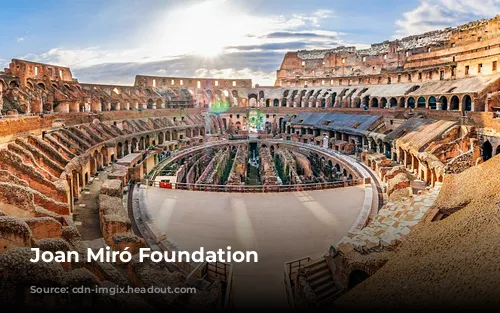
Exploring the Colosseum’s Architecture and Design: A Masterpiece of Engineering
The Colosseum’s sheer size is staggering. Standing 189 meters long, 156 meters wide, and 50 meters high, with a total surface area of nearly 6 acres, the Colosseum holds the Guinness World Record for the largest amphitheater in the world. Constructed primarily from travertine stone and concrete, this four-story structure was one of the most complex man-made constructions of its time.
The Colosseum’s columns and arches, adorned with statues of gods and emperors, are captivating features. The outer facade, resembling a 12-story building, showcases different styles of columns and arches. The fourth level features small windows instead of arches and columns. While most of the structure was primarily white, the Colosseum Arena was built using red and black stone blocks. The arena’s wooden floor was covered with sand, both to prevent slipping and to simplify post-fight cleanup.
Uncovering the Colosseum’s Hidden Secrets: A Journey Through Time
The Colosseum’s arena was equipped with lifts, special machinery, and trap doors for releasing animals into the action floor. A special structure, called the Hegmata, was used to lift heavy animals from the hypogeum (an underground network of tunnels and chambers) onto the arena floor. Combatants entered the arena through the Gate of Life, while the Gate of Death was used for the exit of both victorious and fallen gladiators.
For the longest time, the Underground and the Belvedere (the top level) were inaccessible to the public. However, these exclusive areas have recently opened to tourists, offering a unique glimpse into the Colosseum’s past. The Colosseum’s columns vary by level: the first story features Tuscan columns, the second story has Ionian columns, and the third story boasts intricate Corinthian columns. The fourth floor is decorated with rectangular columns and small windows.
The arena had 36 trap doors for dramatic entrances and special effects during performances. The hypogeum, a two-level underground network of corridors and cells, housed animals and gladiators before their entry into the arena. The Colosseum also had hundreds of fountains for spectators and 80 entrances to manage the flow of crowds. Additionally, a velarium, a large awning, was used to protect spectators from the sun and rain.
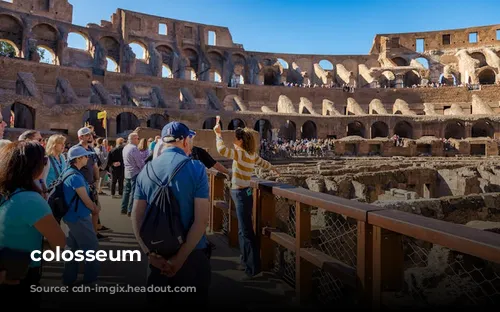
Planning Your Colosseum Adventure: Insider Tips and Practical Information
Here’s everything you need to know to make the most of your Colosseum experience:
Best City Passes: All tickets booked through us include skip-the-line access to the Colosseum. Depending on the ticket you choose, it may also include a guided tour of the Colosseum.
Access to the Underground: A standard Colosseum ticket does not include access to certain areas like the Underground, the Belvedere, and the Arena. You will need to purchase special access tickets to explore these areas.
Guided Tour Group Size: Not more than 20 individuals (adults, children, guides, escorts, etc.) are allowed in a group for entry into the Colosseum.
Tour Duration: Depending on the type of ticket, it can take anywhere between an hour to three hours to visit the Colosseum. If you plan to visit the Roman Forum and Palatine Hill as well, set aside at least half a day for your tour.
Cancellation Policy: While each vendor has a different cancellation policy, for tickets booked through us, we offer a full refund on cancelling tickets 24-72 hours before the start date of the experience, based on the type of ticket you book. Please check before you make your reservation.
Discounts: There are discounts available for European Union (EU) citizens aged 18-25. Upon presenting a valid identity card, patrons can buy tickets at a reduced price. EU and non-EU citizens under the age of 18, along with permanent or contract-based teaching staff enjoy free entry into the Colosseum. For more information on discounts, visit the official site here.
Accessibility: The Colosseum is accessible to wheelchair users. However, due to some uneven surfaces, a Colosseum visit might not be comfortable for those with walking disabilities.
Baggage Storage: The Colosseum does not have baggage storage facilities. It is prohibited to carry bulky bags, backpacks, luggage, and trolleys within the Colosseum premises. However, medium and small backpacks are allowed.
Dress Code: Wear comfortable shoes like sneakers or sports shoes. Break in your new shoes to avoid blisters. It is also advisable to wear breathable clothing, apply sunscreen, and carry a hat/cap and sunglasses, as it can get hot during the summer months.
Audio Guides: Download the Parco Colosseo app from the Google Play store or the Apple Play store. The app offers audio guides in Italiano, Inglese, Francese, Spagnolo, Tedesco. However, this is a paid service. For more information, visit the site here.

